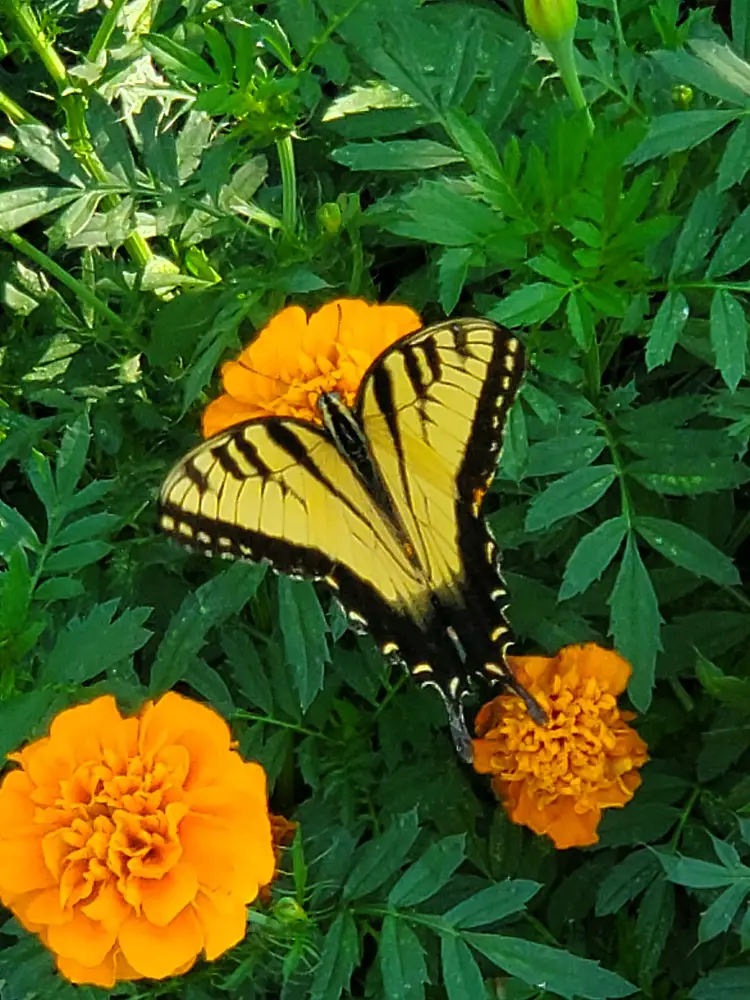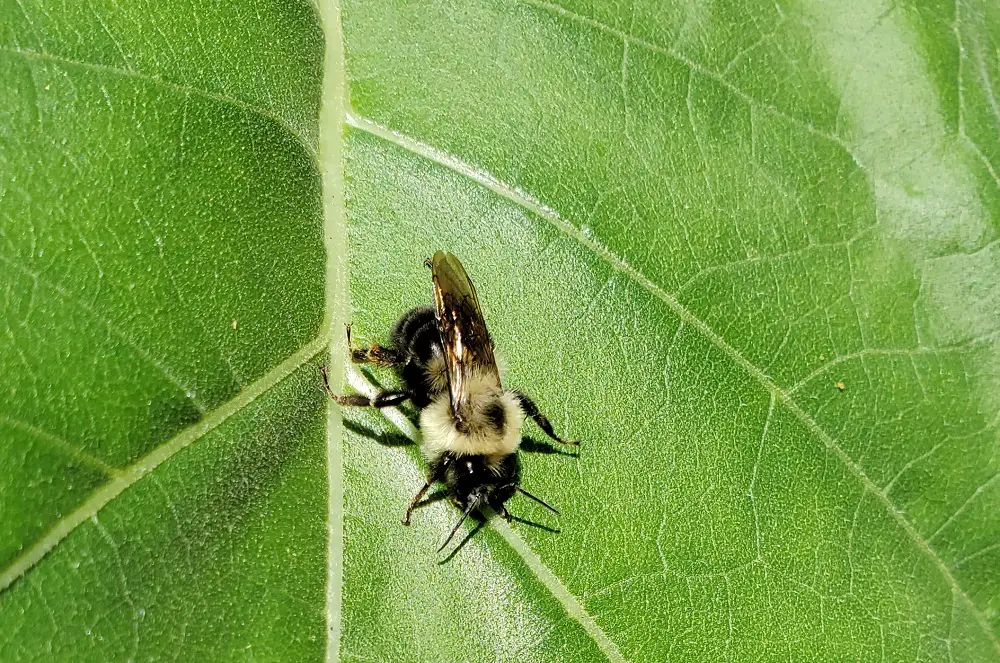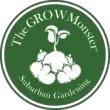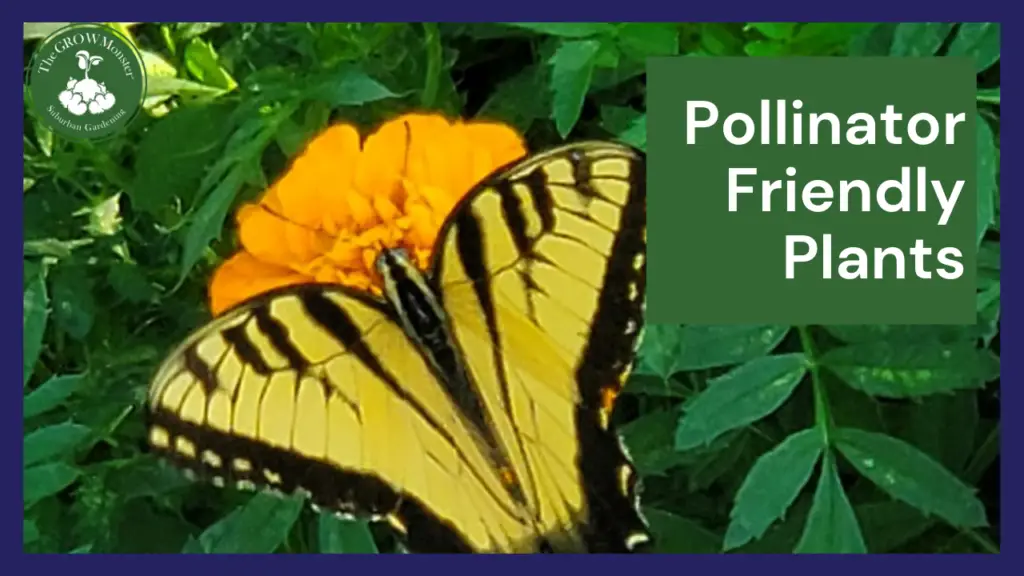In this continuation of our Pollinator Week series, I want to share with you the easiest list of pollinator friendly plants based on the type of pollinator that needs them. I notice certain animals will gravitate towards certain plants and want to make sure you know which is which to attract the pollinators you want in your garden.
This guide to pollinator friendly plants looks at some of the more common pollinators you might find in your garden. Different species of butterfly are attracted to different flowers for their caterpillars to feed. Hummingbirds are only able to reach the nectar in flowers their beak can fit. Bees will want flowers that allow them to make their delicious honey. The following list is based on which plants you will need for which pollinators.
What are Pollinator Friendly Plants?
It’s important to make sure that you have pollinator friendly plants for the pollinators in your area. First thing, you need to know which pollinators are in your area. Take some time to watch and identify the various insects, birds, and other animals that you may see pollinating your flowers. Alternatively, you can look at your local garden cooperative extension office to find out which pollinators are in your area. If you don’t know where the extension office is in your area, visit the USDA website here for an interactive map and choose your location.
Once you know what your local pollinators are, you can see which plants they prefer to lay their eggs, eat, or need for their homes. Local pollinator populations tend to decrease due to a number of factors; among them are fewer places to feed or breed, various disease and non-native species plants and pollinators, pesticide and other harmful chemicals being used in and around the garden area. Make sure you do not introduce a plant that will not be beneficial and at worse will actually harm your pollinator habitat.
Butterfly Friendly Plants
Throughout the year, you will see the beautiful butterflies moving between flowers eating the sweet nectar and laying their eggs. You may also see their caterpillars eating the vegetation as they plump up for their metamorphosis. The butterfly eats the nectar from the flower through a long tube-like appendage called a proboscis. The proboscis is normally coiled up tightly against the butterfly’s head, but it uncoils through a series of muscular actions for the butterfly to feed. The butterfly is then able to suck the nectar up for feeding.

One thing to note about butterflies is that specific butterflies may only feed on and lay their eggs on a few or less plants. Make sure you know which species to find in your area so you are cultivating the correct plants. In my area, I see a lot of Yellow Swallowtail, Red Spotted Purple, Black Swallowtail, and Monarch butterflies. I will be focusing on these species here.
Yellow Swallowtail Butterfly Friendly Plants
Looking around the garden, I see many flowers that the Yellow Swallowtail enjoys visiting. Sunflowers are very popular as are Anise Hyssop and Marigolds. The Grow Monster has found that lining our garden beds with Marigolds has the dual purpose of keeping out animals that would harm our plants while also bringing in these beautiful pollinator butterflies. As far as host plants, the plant that the Yellow Swallowtail will lay its eggs on, this butterfly prefers the Tulip Poplar (or just known as the Tulip tree), Willows, and Prunus Serotina (Black Cherry) trees. If you live near one of these trees or can plant one in your yard, then remember to provide flowers the adult butterflies will enjoy visiting and eating the nectar.
Red Spotted Purple Butterfly Friendly Plants
The Red Spotted Purple butterfly is usually found in areas that are on the edges of woodlands or areas with more dense foilage. These butterflies don’t usually go from flower to flower as often as others might. I will often see them playing in a puddle, or appear to be fluttering on the ground. The Grow Monster makes sure to place rocks with crevices to allow mud puddles for this beautiful butterfly. They also enjoy eating rotting fruit. Because of this, I will take strawberries that aren’t good enough for us to eat and place them in a pile in the garden. The butterflies are then able to have a place to drink water and consume the rotting fruit. This is a little different than the other types of butterflies, but they will also pollinate some of your flowers. This butterfly prefers Prunus Serotina (Black Cherry), willows (especially the Carolina Willow), and often times will prefer to be along a water source. They lay their eggs on the tips of the leaves. If you have these trees on or near your property, make sure you have a place for the adult butterfly to eat and crevices for water to collect for them.
Black Swallowtail Butterfly Friendly Plants
The Black Swallowtail butterfly like herbs as much as humans do! This butterfly lays eggs on plants in the carrot family so when you are planning your garden make sure to plant some for the butterfly caterpillars too. These plants include dill, parsley, carrots, and fennel. Make sure to plant enough host plants for the caterpillars to have enough to eat, the adult female lays light yellow eggs on the plants and the caterpillar emerge within a few days. Pair these host plants with nectar plants for the adult butterflies. Black Swallowtail butterflies like zinnias, marigolds, and coneflowers. This butterfly can lay up to 50 eggs per day!
Monarch Butterfly Friendly Plants
The Monarch butterfly may be one of the most recognizable butterflies in the suburban home garden. It is very distinct with its orange and black design. These butterflies are toxic to predators because the caterpillars feed on milkweed. The milkweed plant comes in a few different colors like yellow and pink. Their caterpillars will only eat milkweed, so it is very important to note that if you want to provide a place for the Monarch butterfly to lay eggs then you need to grow milkweed. There are different varieties of milkweed in different regions in the US. Check out the Xerces Society Regional Milkweed Guides here to find out which variety grows best in your region. The adult Monarchs like milkweed, Zinnia, sunflower, and petunias. Really, plant any flowers that are yellow, pink, red, and purple with a light scent and you can’t go wrong.
Hummingbird Friendly Plants
Hummingbirds love the color red! The Grow Monster has hummingbird feeders in the garden and so many birds come humming around throughout the day. I love watching the hummingbirds come to the feeder and around the flowers near it. I have seen hummingbirds frequent the marigolds, canna lilies, morning glories, and anise hyssop. They like to drink nectar from flowers that are more cone-shaped that they can fit their beak in. Whether you are able to plant flowers or use a hummingbird feeder, you can still create areas for the birds to rest. One thing to note, hummingbirds do not like to make nests in bird houses. At night, they fly to nearby trees for shelter. They are amazingly inquisitive, curious in nature- and may even hum about your head or peer through your windows to alert you that their feeder is low or has gone bad. They are very fun to have around the garden and can be very playful to watch.
Bee Friendly Plants
When thinking about pollinator friendly plants, it is important to provide something for the bees! The Grow Monster is always noticing our little bee friends buzzing about the garden. There are honeybees, bumble bees, carpenter bees, mason bees, and other solitary bees to think about. Bees love sunflowers, I will find them busy collecting pollen or even just resting and sleeping on the sunflowers and their leaves. Depending on the species of bee, you should plant a variety of shapes, sizes, and colors of flowers. The Grow Monster will find bees on marigolds, cucumbers, squash, strawberries, and coneflowers. These types of flowers are all very different but still attract bees. You might also consider putting out some bee houses for the mason bees so they have a place to feed their larvae close to where they collect the pollen.

Beneficial Beetle Friendly Plants
While many gardeners are trying to rid their garden of beetles, some know that there are also beneficial beetles that pollinate. For example, Magnolias need beetles to pollinate their flowers. Beetles prefer wider, larger, more open flowers because they tend to be larger and more clumsy than their bee and butterfly counterparts. Beetles can also be beneficial in ridding the garden of pests- consider the ladybug eating aphids. Often, the beetles will be seen pollinating flowers at night. Plants they prefer are magnolias, waterlilies, goldenrod, and tend to like the more dull looking and reddish-brown flowers. The beetles also like to hang out in the compost piles and dead leaf matter eating some of the pests in the garden- double duty!
Bat Friendly Plants
Before moving to Virginia, I never really saw bats “in the wild” before but they can be seen right as the sun is going down and all night here in zone 7. Bats are important pollinators for plants with nocturnal flowers and are attracted to more larger, bell shaped flowers. They really like pale or white flowers like moonflowers, which open at night. Bats will eat both insects in the flowers and the nectar of the flower itself, so they are beneficial pollinators that also act as a natural pest control. It is important to note that most pollinating bats are found in Asia, the Pacific Islands, and Africa. But, that doesn’t mean you shouldn’t make your garden hospitable to the ones in your area. Bats like Dahlias, mango, banana, guava, honeysuckle, raspberry, tobacco and other trumpet-shaped flowers.
Conclusion
I hope this primer on pollinator friendly plants helps you get started thinking about what plants you can have in your own garden to attract and feed pollinators. If we want to have productive gardens, we need to think of how to make the garden more hospitable to these pollinators. There are many more specific types of butterflies, bees, beetles, and birds that help pollinate but this is just a sampling to help you get started. If you enjoyed reading this post, consider checking out more of our Pollinator Week posts to learn about what is pollinator week and what should be in a pollinator garden. If you’ve planted sunflowers for your native pollinators, check out this post on how to transplant sunflowers to help move your starts where you want them.
Continue reading the next articles in our Pollinator Week Series:
If you aren’t familiar with Pollinator Week, start here.
What Should Be in a Pollinator Garden



Pingback: What is Pollinator Week? - The Grow Monster
Pingback: What Should Be in a Pollinator Garden? - The Grow Monster
Pingback: Easily Attract Pollinators to the Vegetable Garden - The Grow Monster